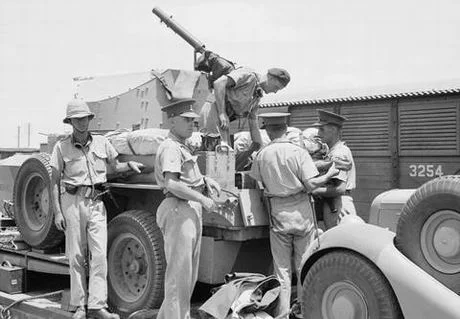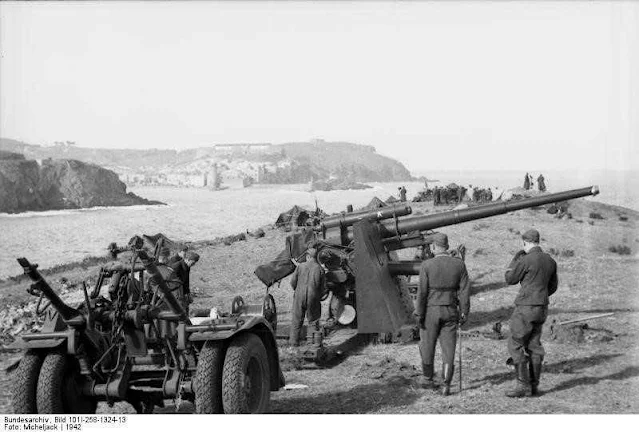 |
| Matilda IIs, North Africa. |
 |
| Matilda II. |
 |
| Matilda II, North Africa. |
 |
| Matilda IIs, North Africa. |
 |
| Matilda II, North Africa. |
 |
| A reactivated Vickers Medium Mk II serving with the Royal Tank Regiment in 1940. |
 |
| Two Vickers Medium Mk II tanks and a Morris reconnaissance car during maneuvers on Salisbury Plain in 1939. |
 |
| Vickers Medium Mark I tanks on maneuver somewhere in England, in 1930. |
 |
| The staple of the British armored force in the interwar period, the Vickers Medium Mk I. This vehicle serves with the Royal Tank Regiment in Essex, in 1939. |
 |
| A38 Valiant infantry tank. |
 |
| Universal Carrier 2-pdr. |
 |
| June 19, 1944: The remains of a Universal Carrier blown up by a mine in Tilly-sur-Seulles. |
 |
| Infantry and carriers of 59th Division advancing during fighting around Caen, 11 July 1944. |
 |
| Carrier, Fontane-Etoupefour, July 1944. |
 |
| Carrier (T251469). |
 |
| Carriers, North Africa. |
 |
| Staghound I armored car, Netherlands. |
 |
| Stuart light tanks. |
 |
| A member of the 8th King's Royal Irish Hussars mans the turret-mounted .30-inch machine gun on one of the regiment's new Stuart tanks, 28 August 1941. |
 |
| Sherman ARV I towing a Sherman medium tank, Normandy, June/July 1944. |
 |
| Staff officers examine a newly-arrived Sherman tank sitting on a Scammell Pioneer tank transporter, 15 September 1942. |
 |
| SAS troopers cleaning weapons behind the lines in the desert. |
 |
| David Stirling, left, and Jock Lewes rest in the shade cast by a truck of the Long Range Desert Group, planning an operation in the desert behind the lines. |
 |
| 2nd Royal Gloucestershire Hussars, Sidi Bishr, Nov. 1942. |
 |
| A 1924 Rolls-Royce Armoured Car with modified turret, in the Bardia area of the Western Desert, 1940. |
 |
| British armored car, Palestine, 1938. |
 |
| Armored car and Rolls-Royce Silver Ghost cars at Lydda Railway station, Palestine, circa 1938. |
 |
| Rolls-Royce Silver Ghost cars with armored car at Lydda Railway station, Palestine, circa 1938. |
 |
| Bofors gun portee. |
 |
| June 30, 1944: A Morris light reconnaissance car and other vehicles passing through Bretteville. |
 |
| Morris CS8 Commercial trucks, Greece, 1941. |
 |
| Guy Quad-Ants fording a river. |
 |
| Morris C8 Quad artillery tractor. |
 |
| Sherman flail mine clearing tanks. |
 |
| A Medium Mk III serving as a command tank during exercises in 1931. One such vehicle was the personal tank for Percy Hobart. |
 |
| Matilda tanks burning, France, May 1940. |
 |
| Matilda infantry tank, Derna Flats, North Africa. |









































































